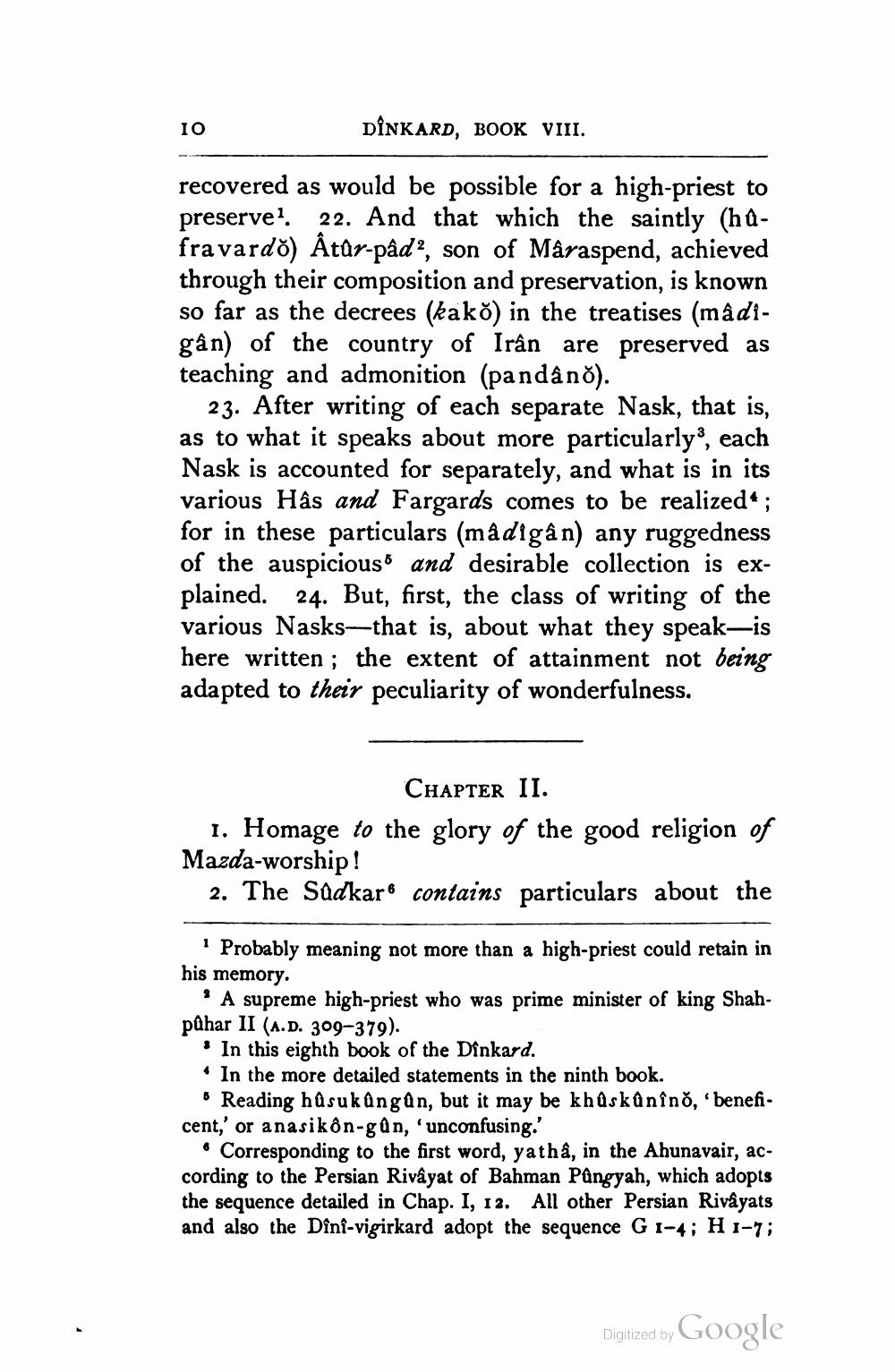________________
10
DÎNKARD, BOOK VIII.
recovered as would be possible for a high-priest to preserved. 22. And that which the saintly (hufravardo) Atür-pâd?, son of Maraspend, achieved through their composition and preservation, is known so far as the decrees (kako) in the treatises (mâ digân) of the country of Irân are preserved as teaching and admonition (pandâ no).
23. After writing of each separate Nask, that is, as to what it speaks about more particularly, each Nask is accounted for separately, and what is in its various Hâs and Fargards comes to be realized" ; for in these particulars (mådigân) any ruggedness of the auspicious and desirable collection is explained. 24. But, first, the class of writing of the various Nasks—that is, about what they speak—is here written ; the extent of attainment not being adapted to their peculiarity of wonderfulness.
CHAPTER II. 1. Homage to the glory of the good religion of Mazda-worship!
2. The Sadkar 6 contains particulars about the
Probably meaning not more than a high-priest could retain in his memory.
: A supreme high-priest who was prime minister of king Shahpahar II (A.D. 309-379).
• In this eighth book of the Dinkard. * In the more detailed statements in the ninth book.
* Reading hûsukangan, but it may be khûskûnîno, beneficent,' or anasikôn-gûn, 'unconfusing.'
. Corresponding to the first word, yathâ, in the Ahunavair, according to the Persian Rivâyat of Bahman Pangyah, which adopts the sequence detailed in Chap. I, 12. All other Persian Rivayats and also the Dini-vigirkard adopt the sequence G1-4; H1-7;
Digitized by Google




